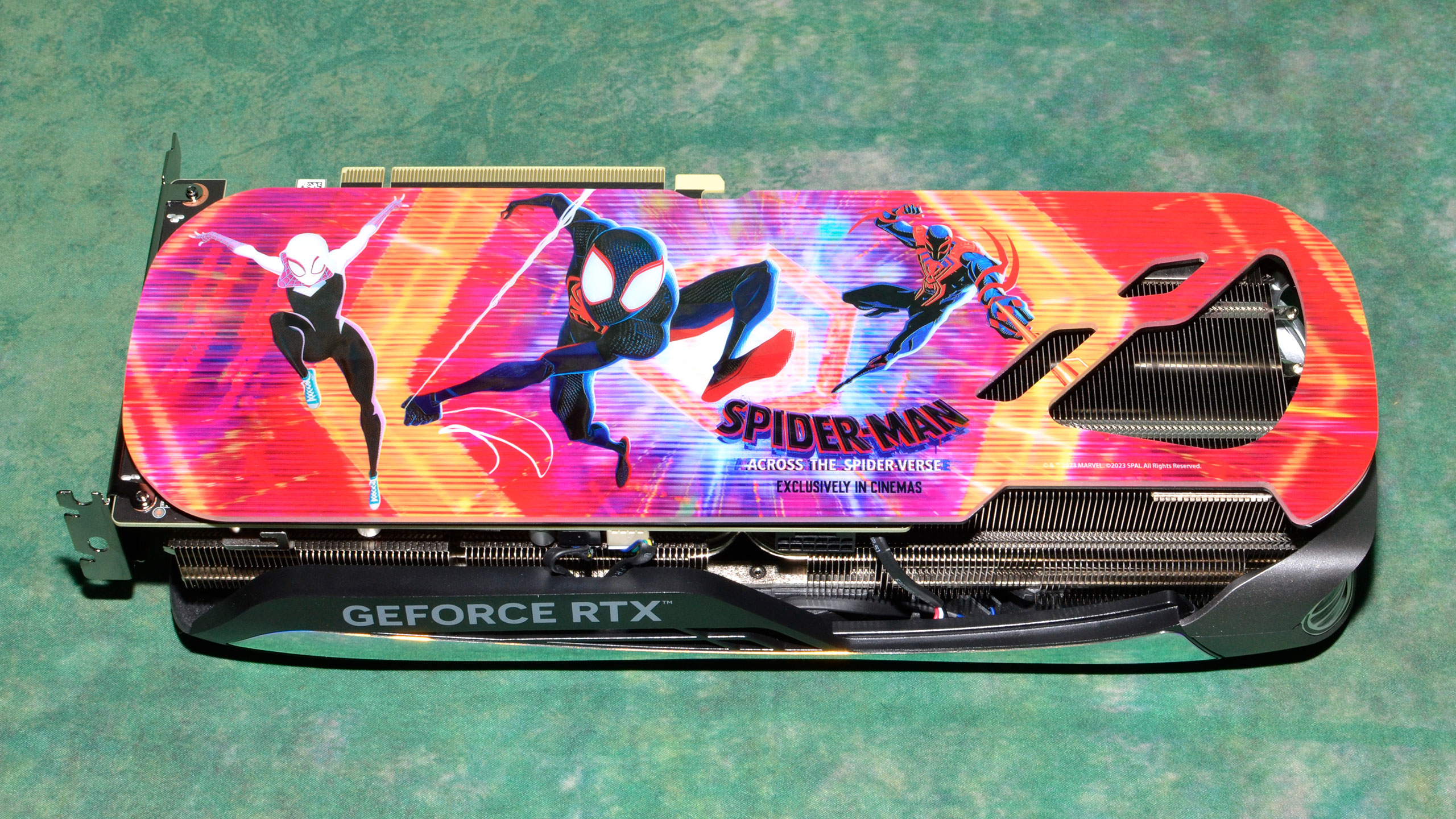Why you can trust Tom's Hardware
We have 1080p, 1440p, and 4K benchmarks, and given the $879 MSRP price, the Zotac RTX 4070 Ti better make a good showing in 4K results. It's still more of a 1440p card in our view, or 4K with DLSS, but we're only testing native resolution gaming performance.
Here's the overview, first with the 15-game full suite, and then with separate rasterization-only and DXR-only (i.e. ray tracing) charts. We'll discuss the individual results further down the page.
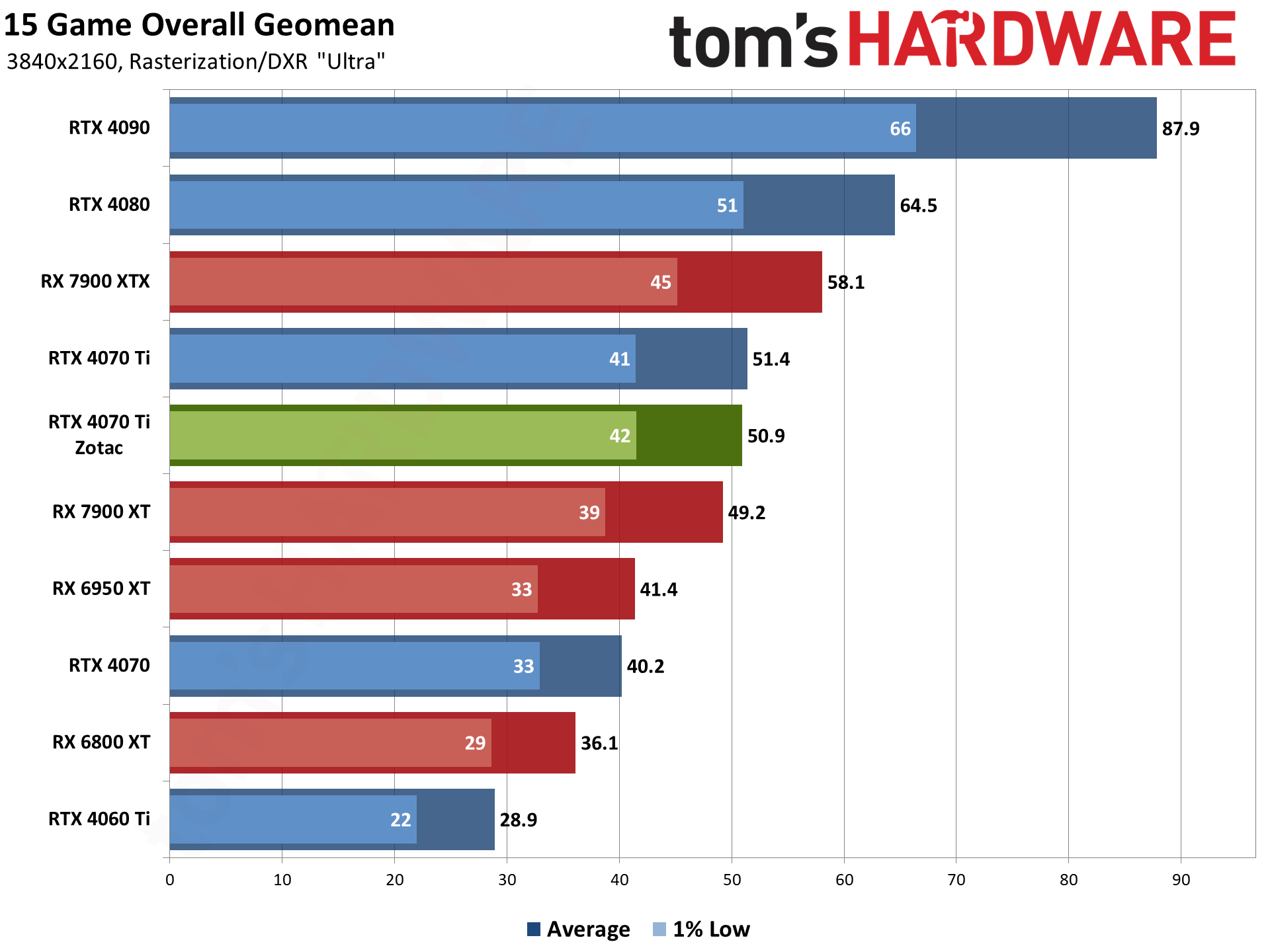
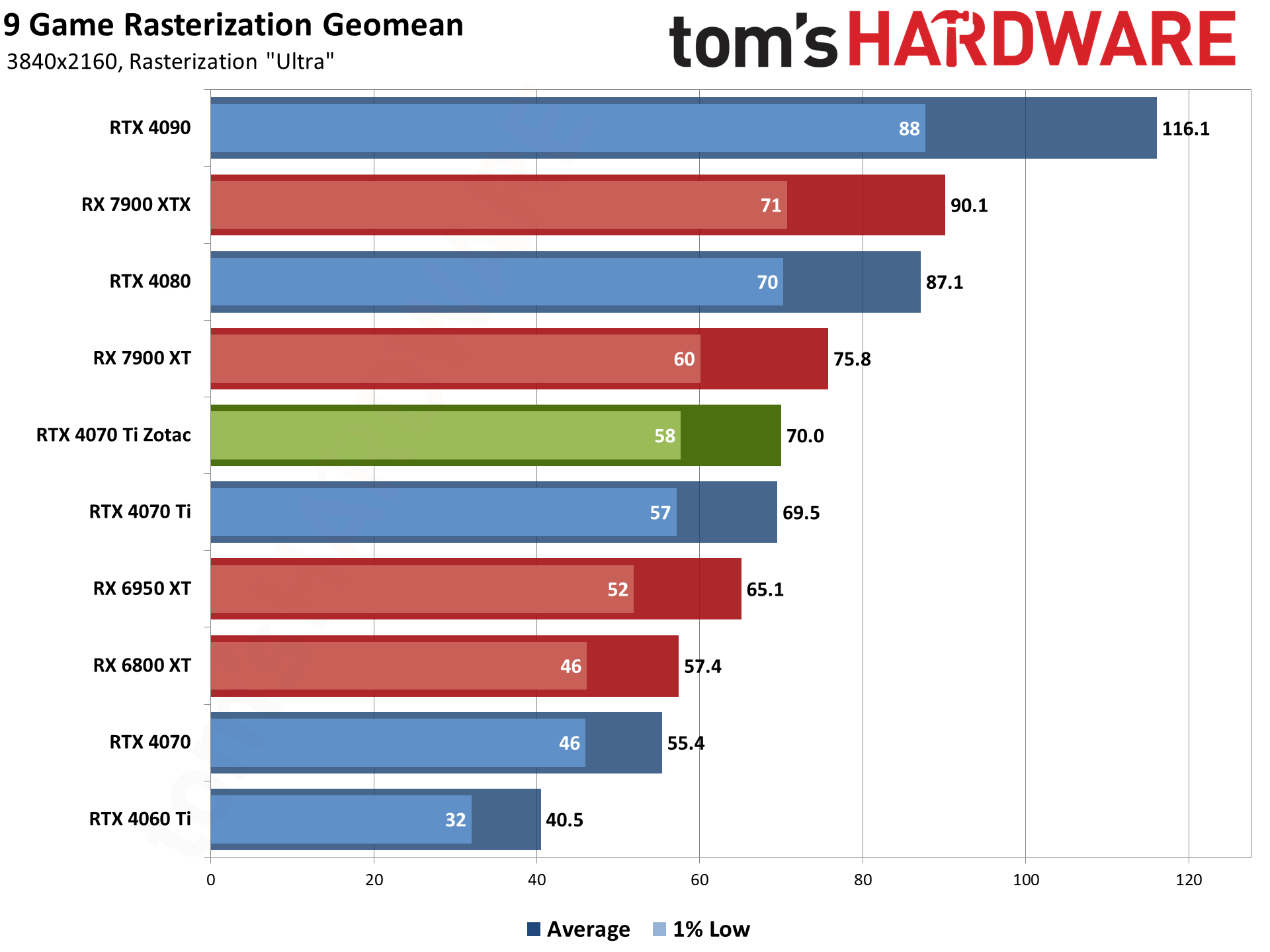

There's one point to mention first: Nvidia doesn't make reference Founders Edition RTX 4070 Ti cards, so our baseline sample is a third-party card. It's an Asus RTX 4070 Ti TUF Gaming OC, which has a boost clock of 2730 MHz in default mode, or the same 2760 MHz as the Zotac card if you install Asus' GPU Tweak software and enable that. As such, it's little surprise that the two RTX 4070 Ti cards in the chart are generally tied.
The other item we need to note is that games and drivers are in a perpetual state of flux. We retested all of the GPUs in the above charts within the past two months, but the Zotac card was tested in the past week, using the latest 535.28 drivers. Cyberpunk 2077 also received its path tracing update, and some of the other games (Total War: Warhammer III and Forza Horizon 5) have also seen patches. Those patches didn't appear to cause any significant changes in performance, but a few percent here or there wouldn't be shocking.
Outside of the above, the standings are what we've seen before. In rasterization games, AMD's equivalently priced GPUs do better than their counterparts; in ray tracing games, the reverse is true and Nvidia GPUs do better. Lump them all together and we get an overall result, but of course the game selection is up for debate.
Also note that we're not showing DLSS or FSR2 upscaled performance. Our test suite has more games with DLSS support (12) than FSR2 (5), and that tends to hold for the wider market. Factor that in and Nvidia GPUs gain some ground, plus DLSS still looks better than FSR2. How much you want to weight such things is ultimately up to the individual, as some people refuse to view upscaling as anything but a crutch. I take a different view, and if a game has upscaling support, I'm usually happy to get the boost in performance for a minimal tradeoff in image quality, especially at 4K.
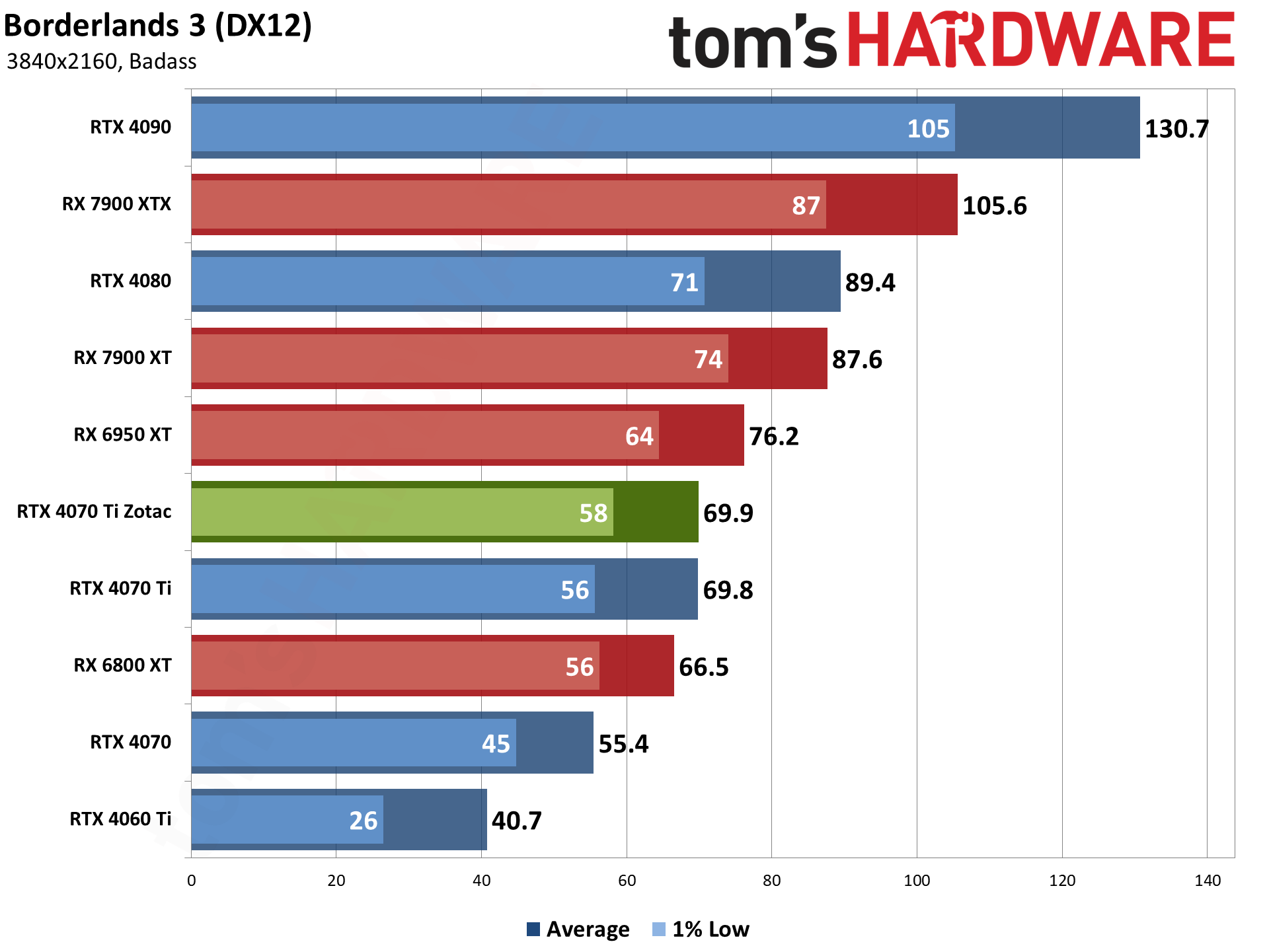
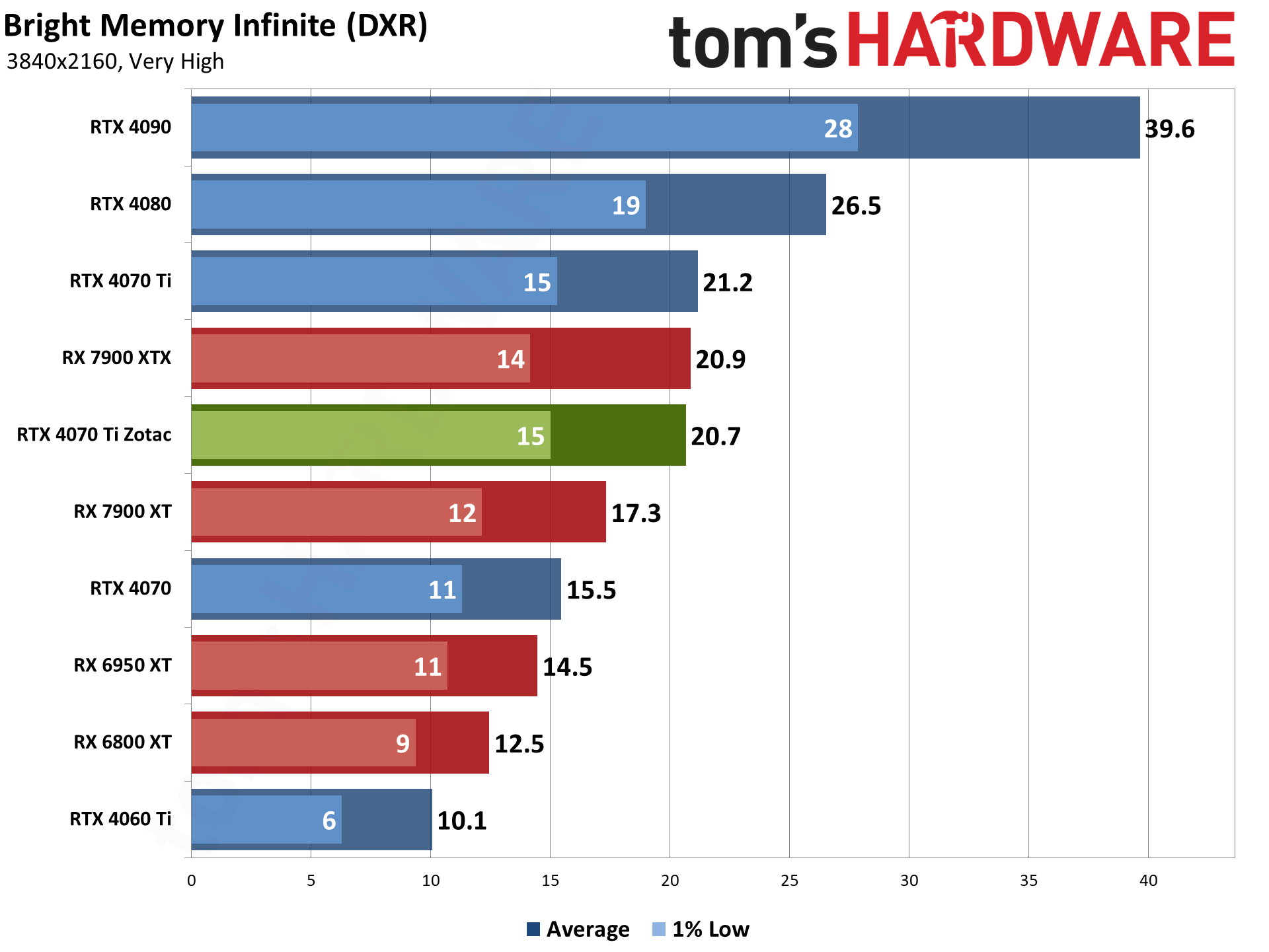
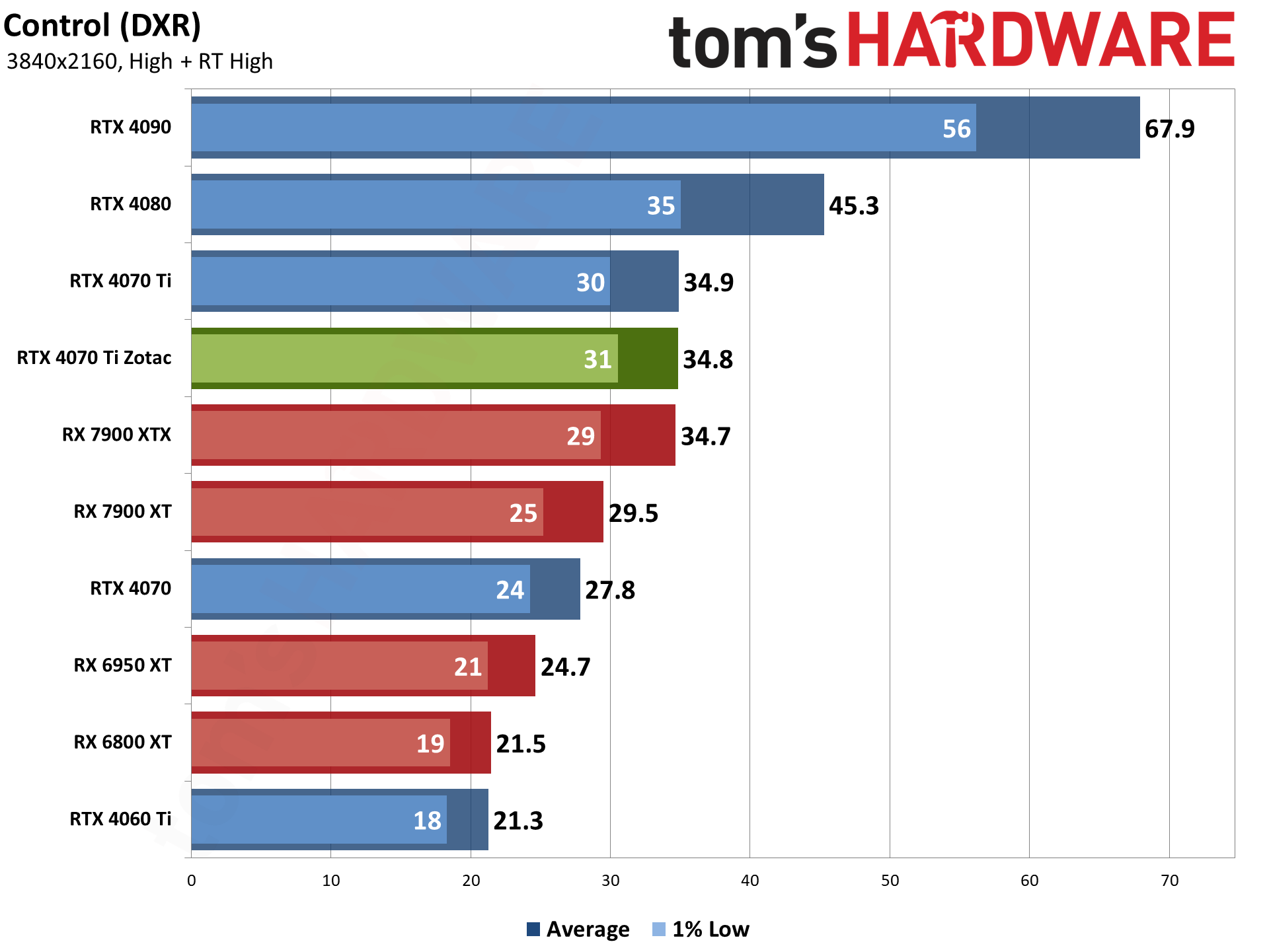
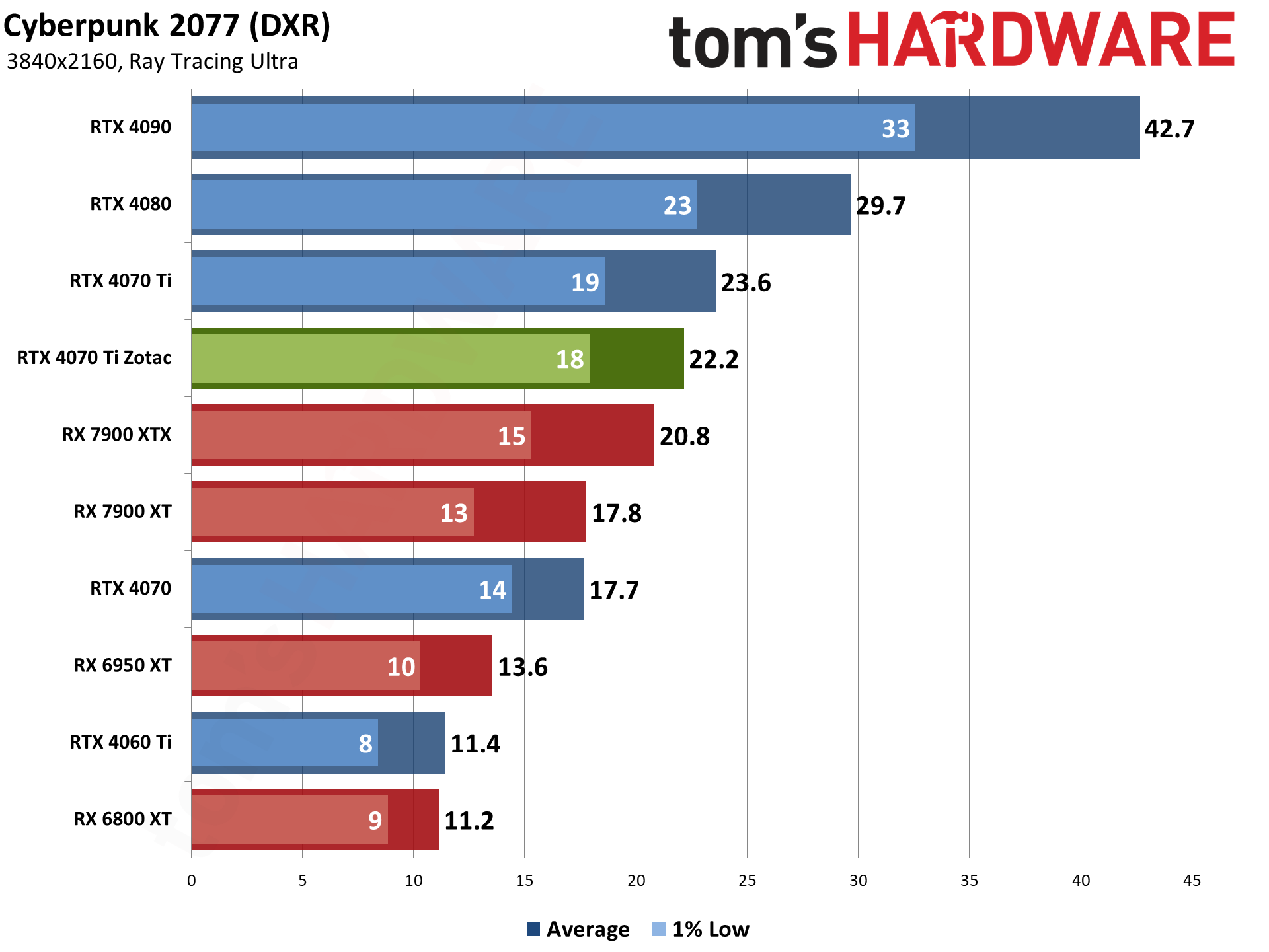
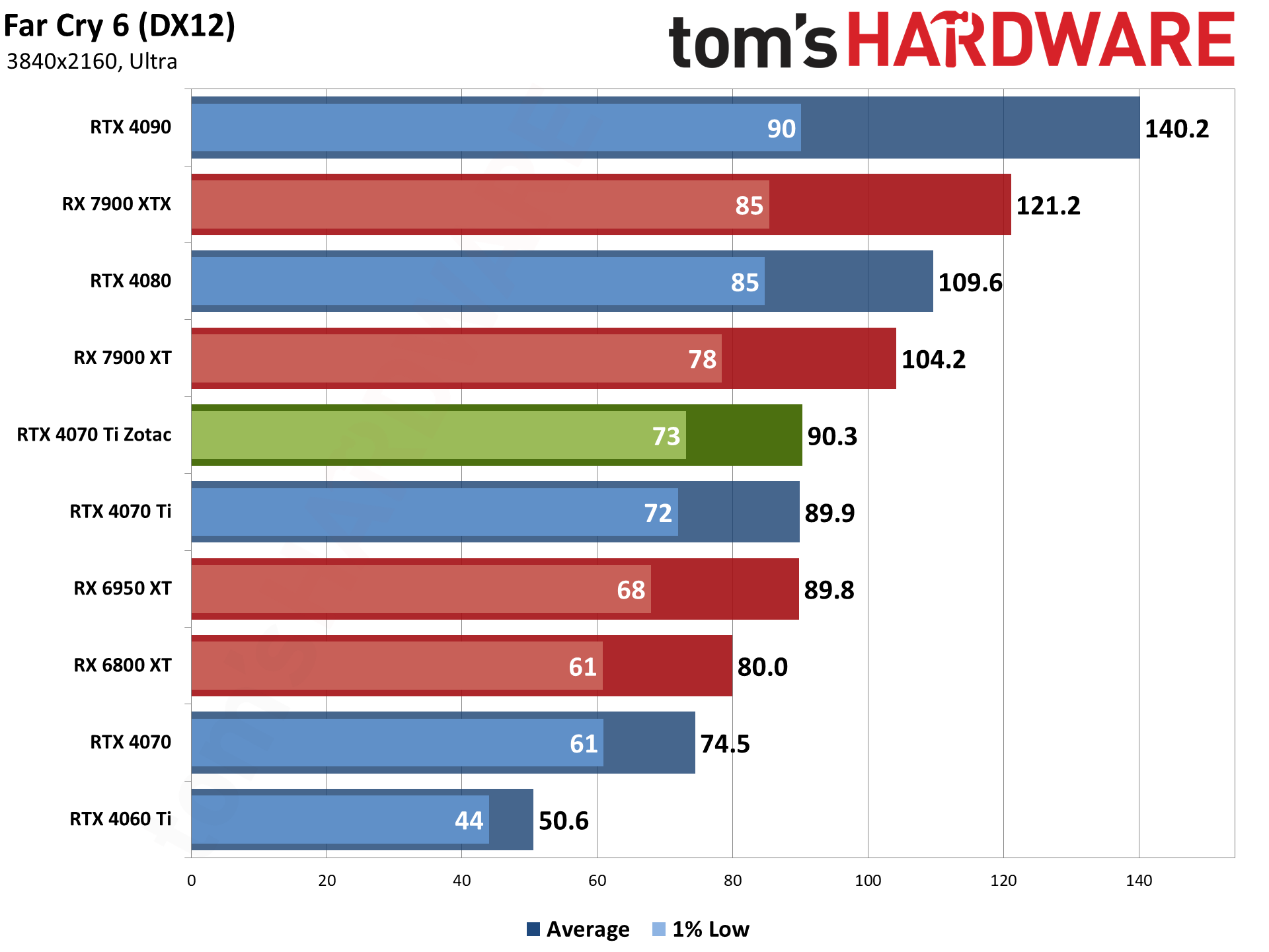
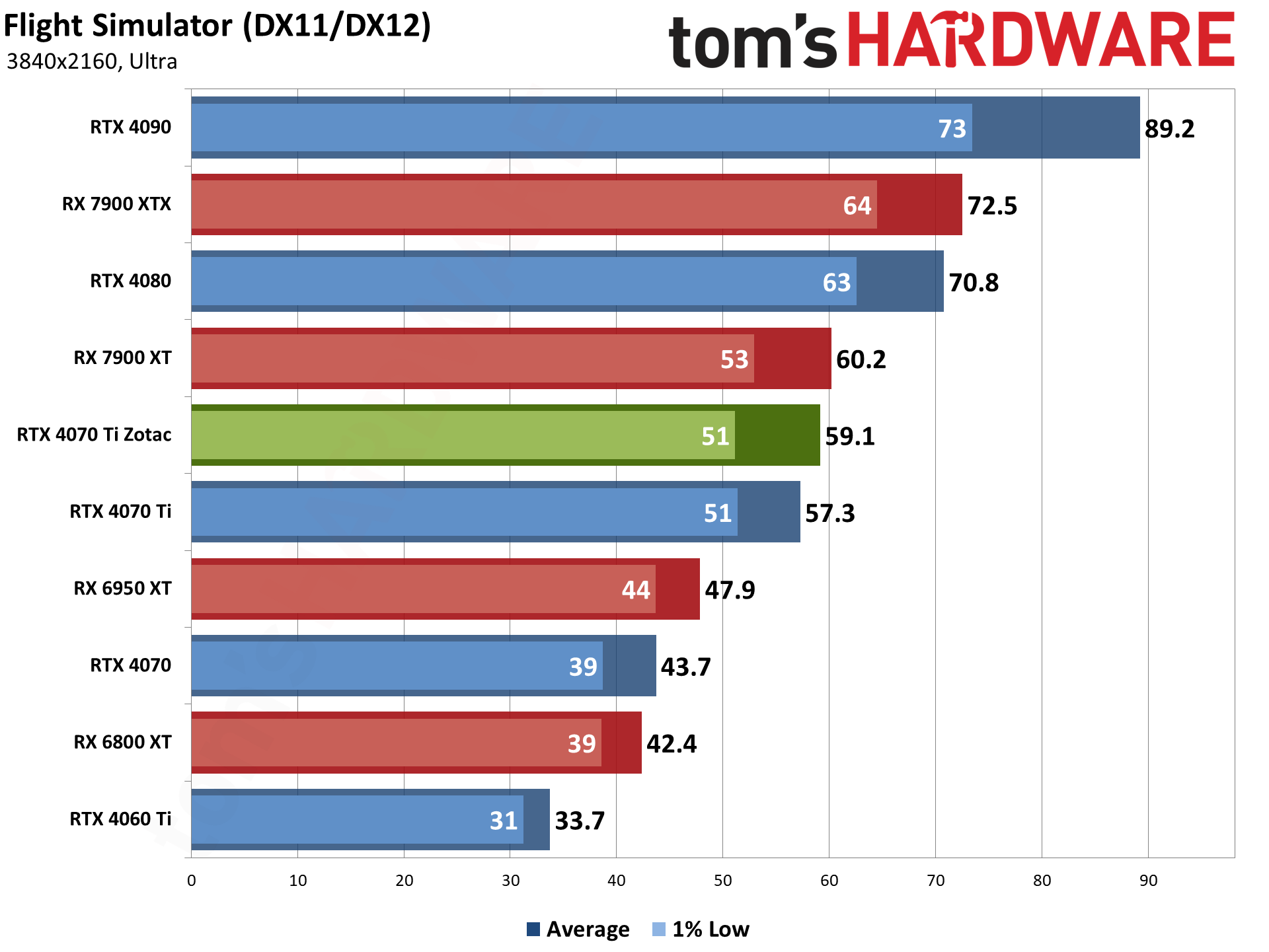
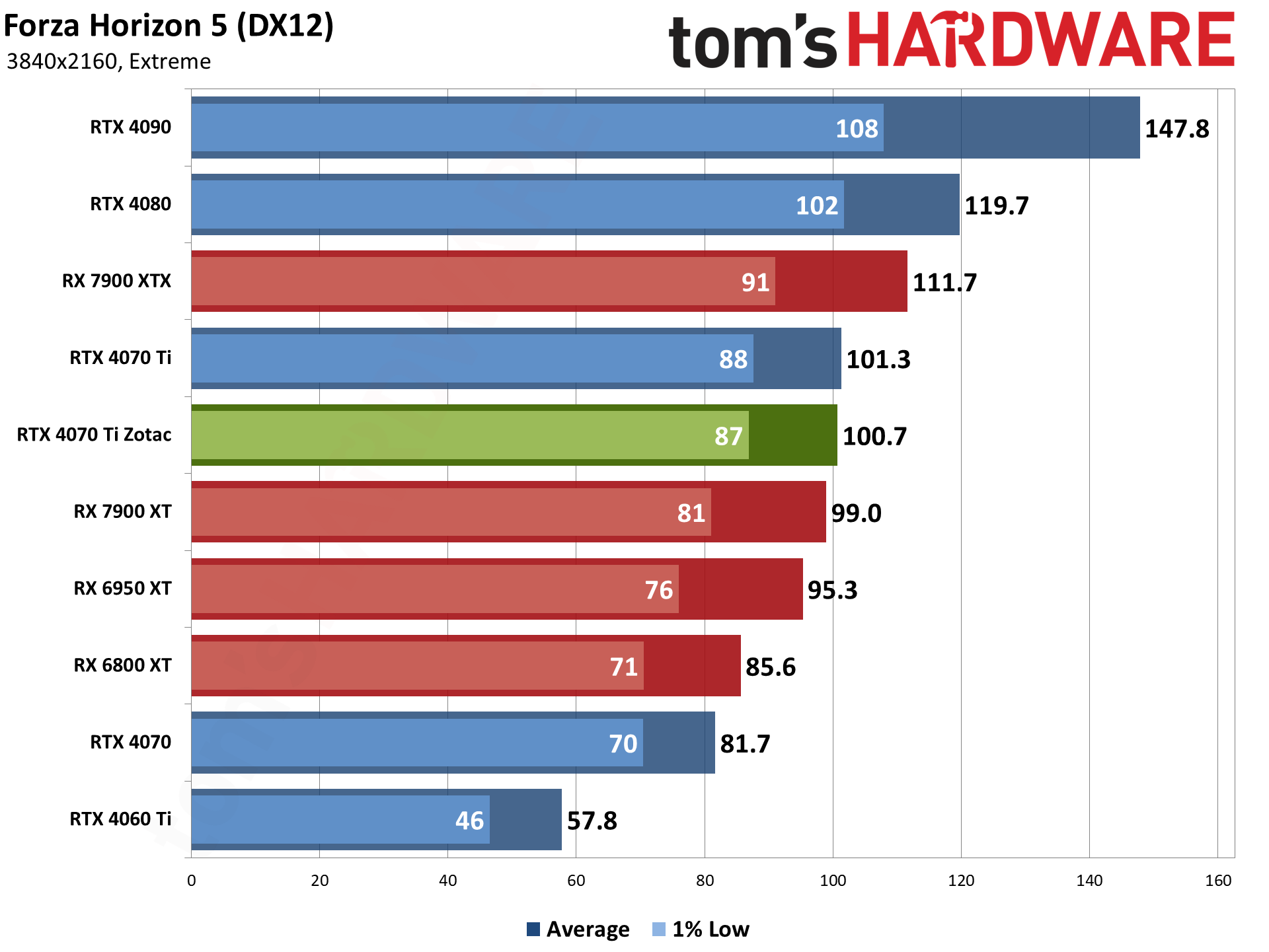

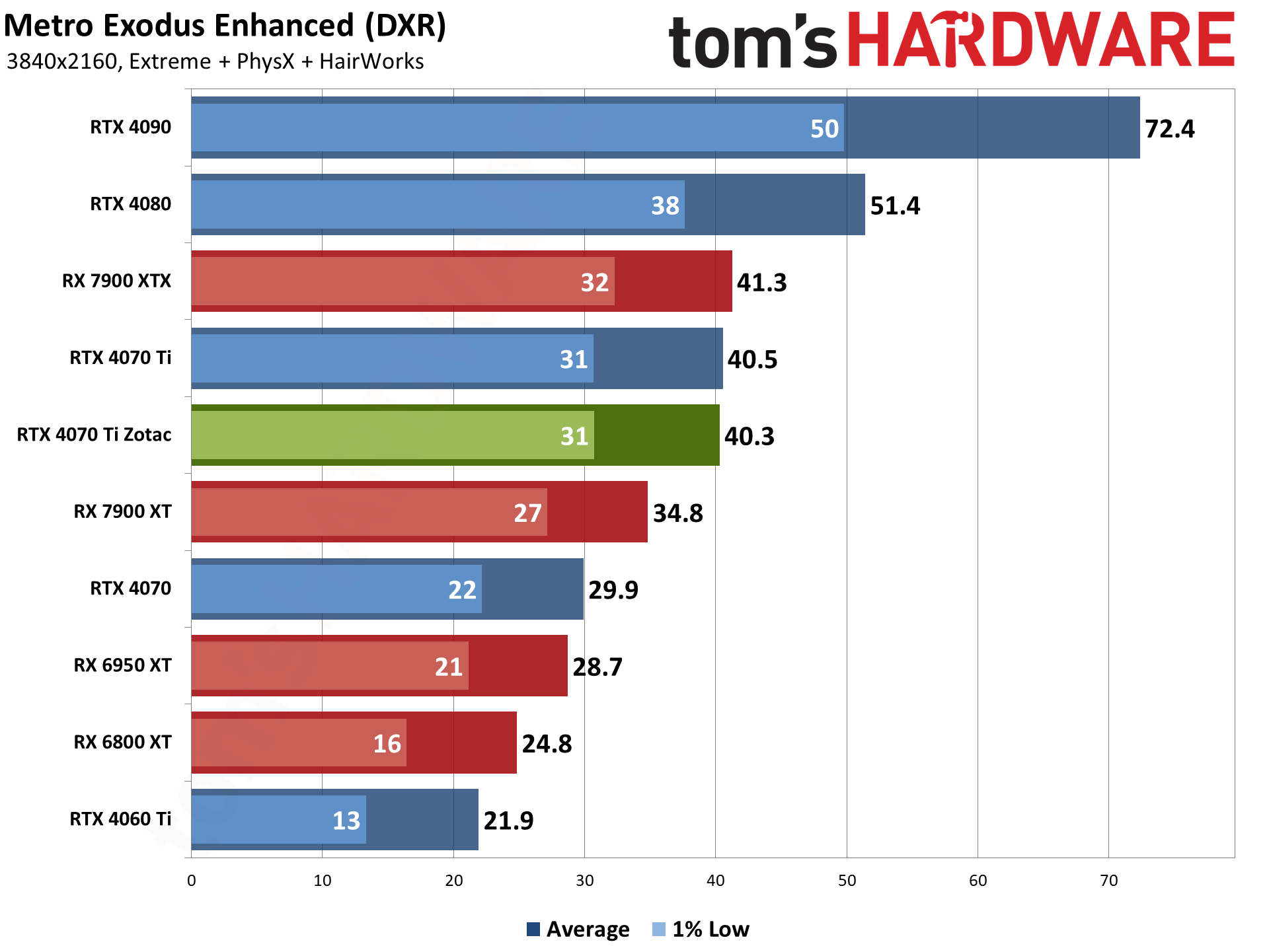
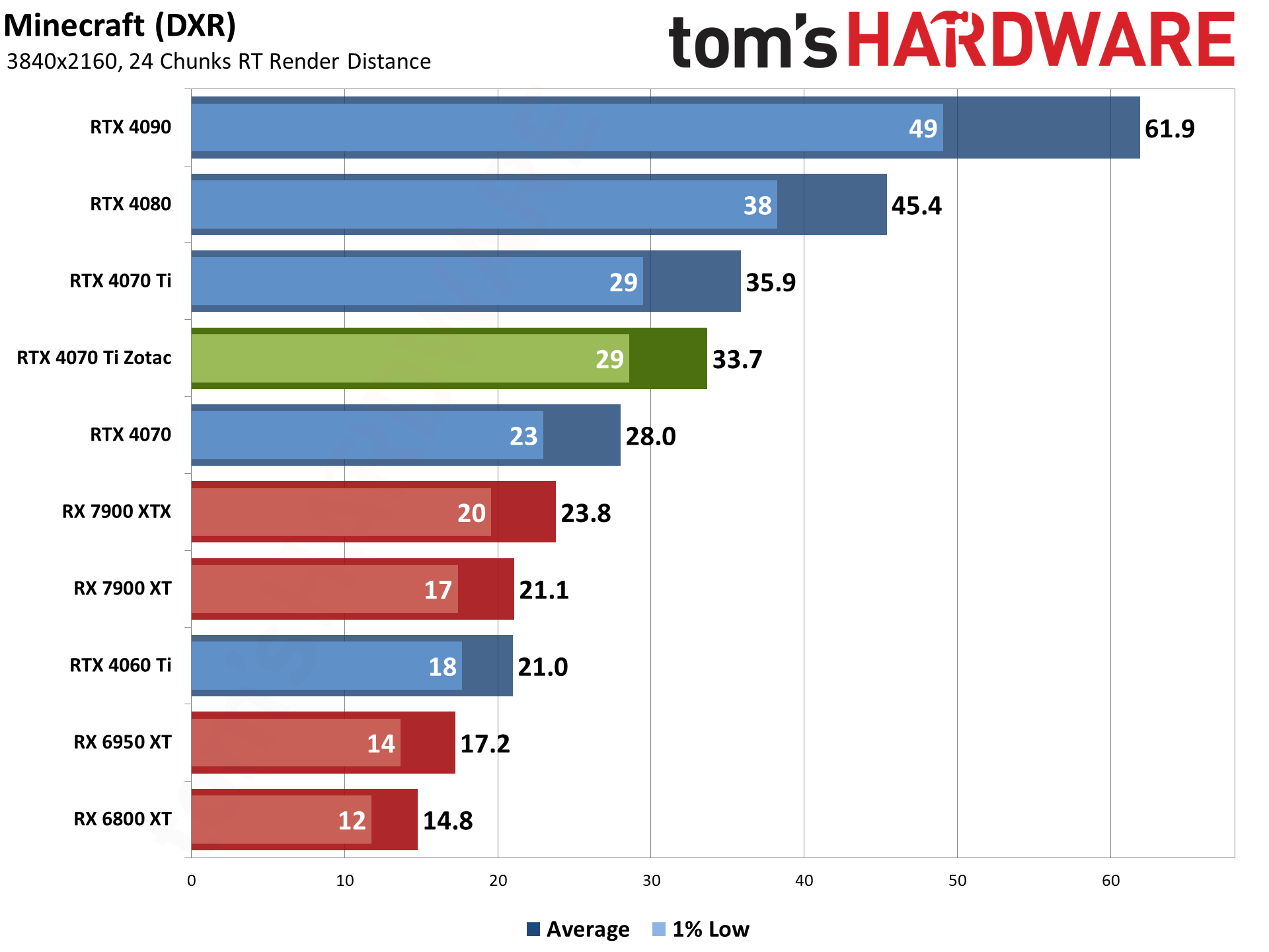
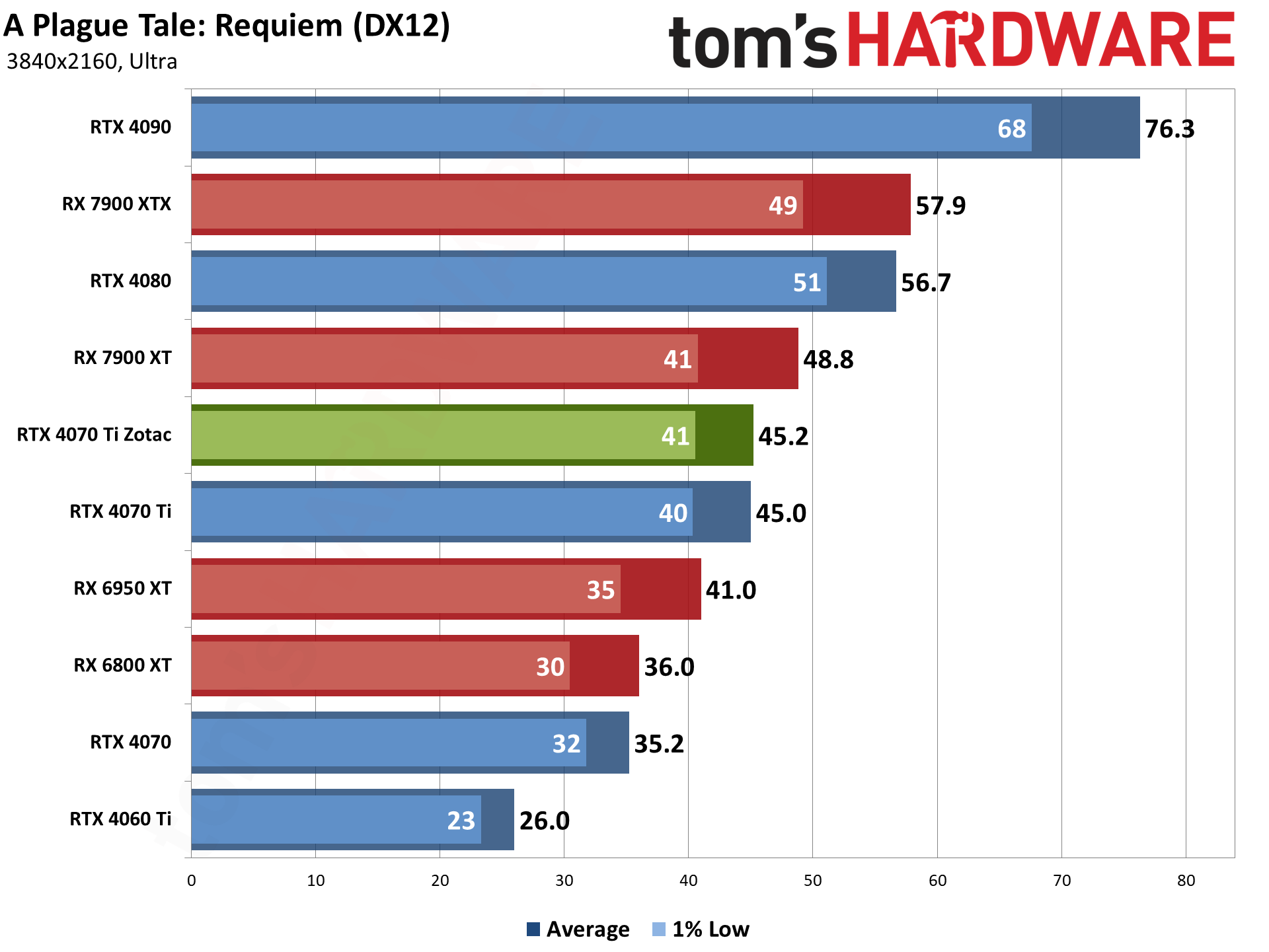
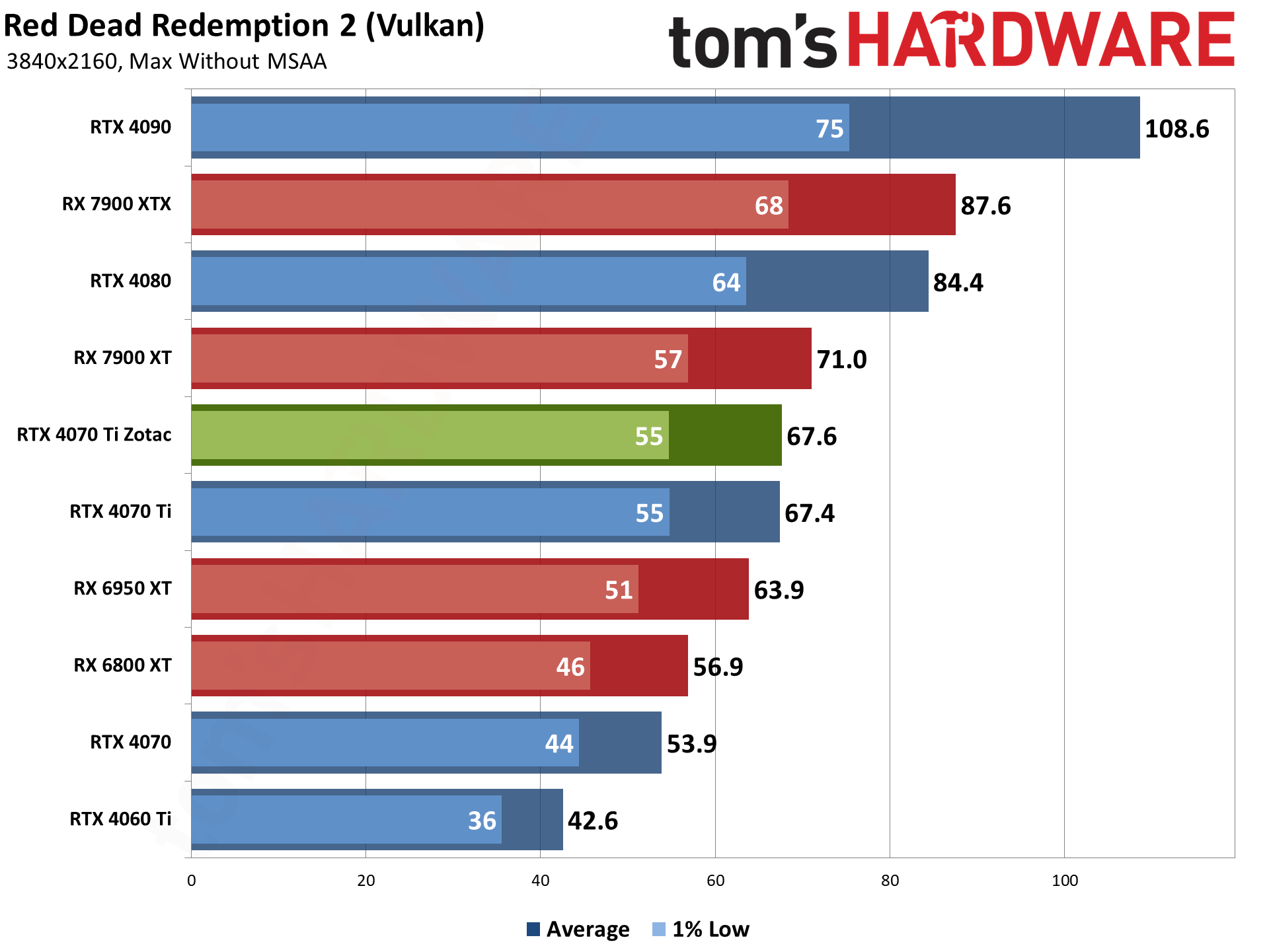
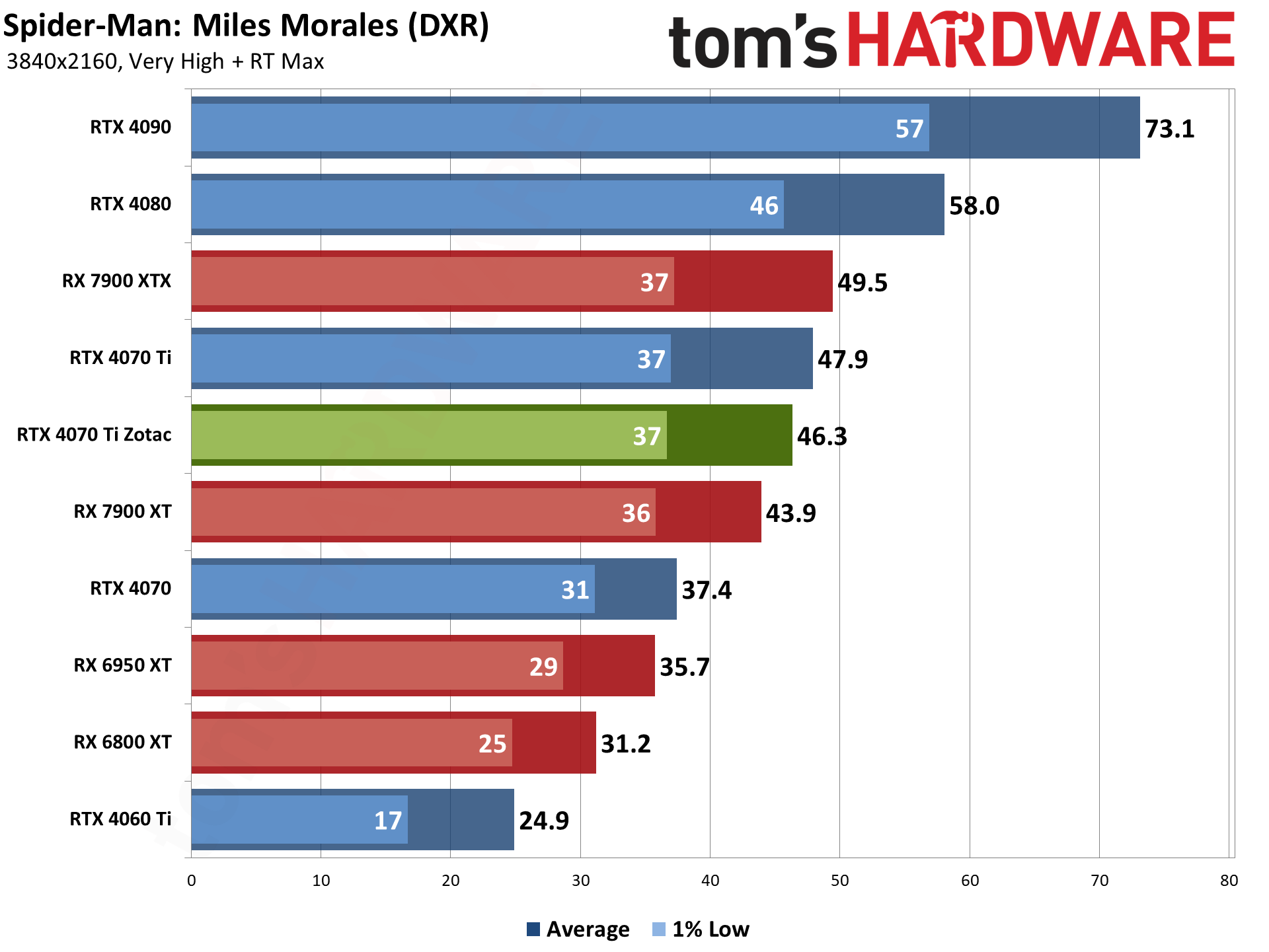
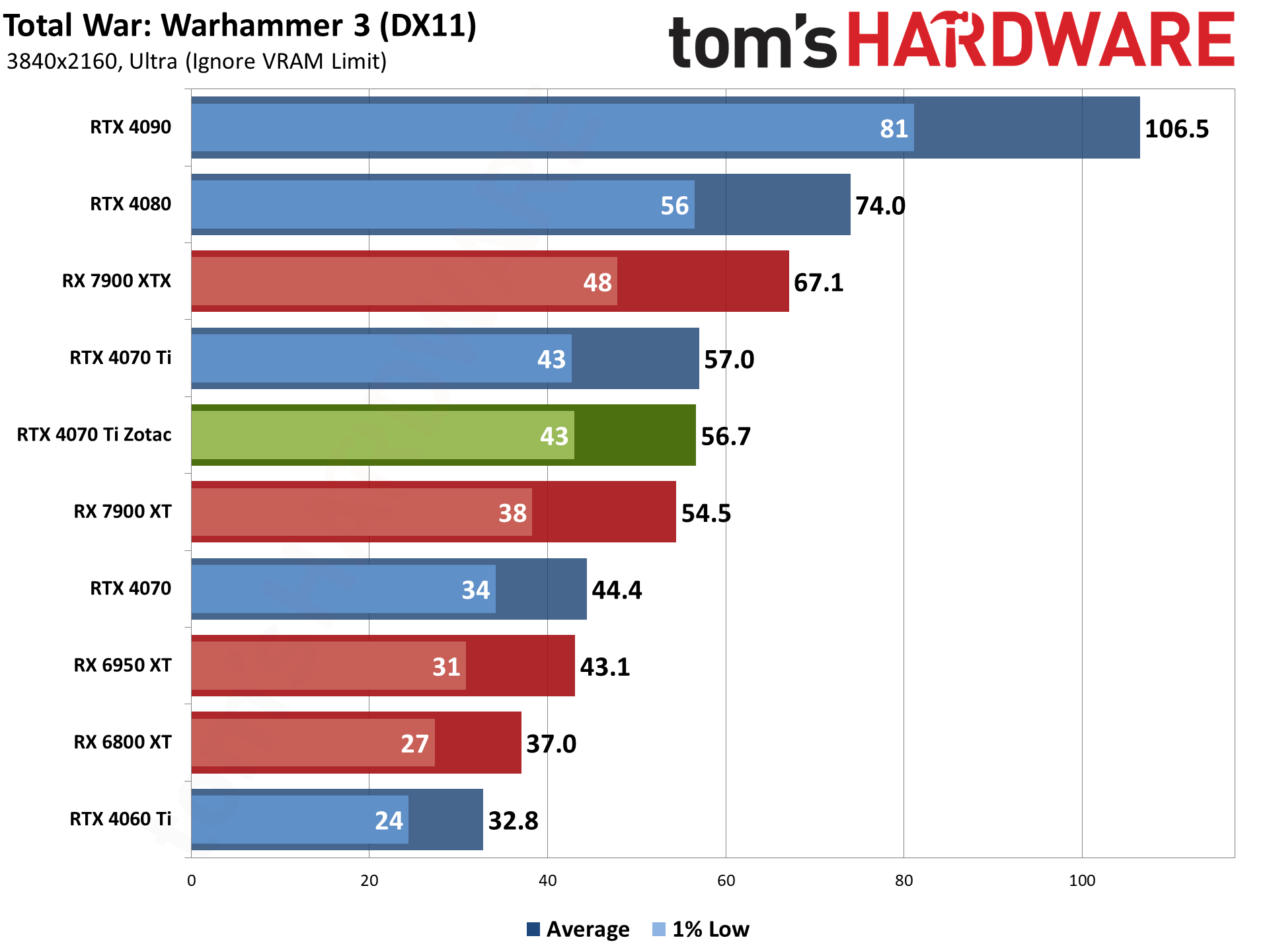
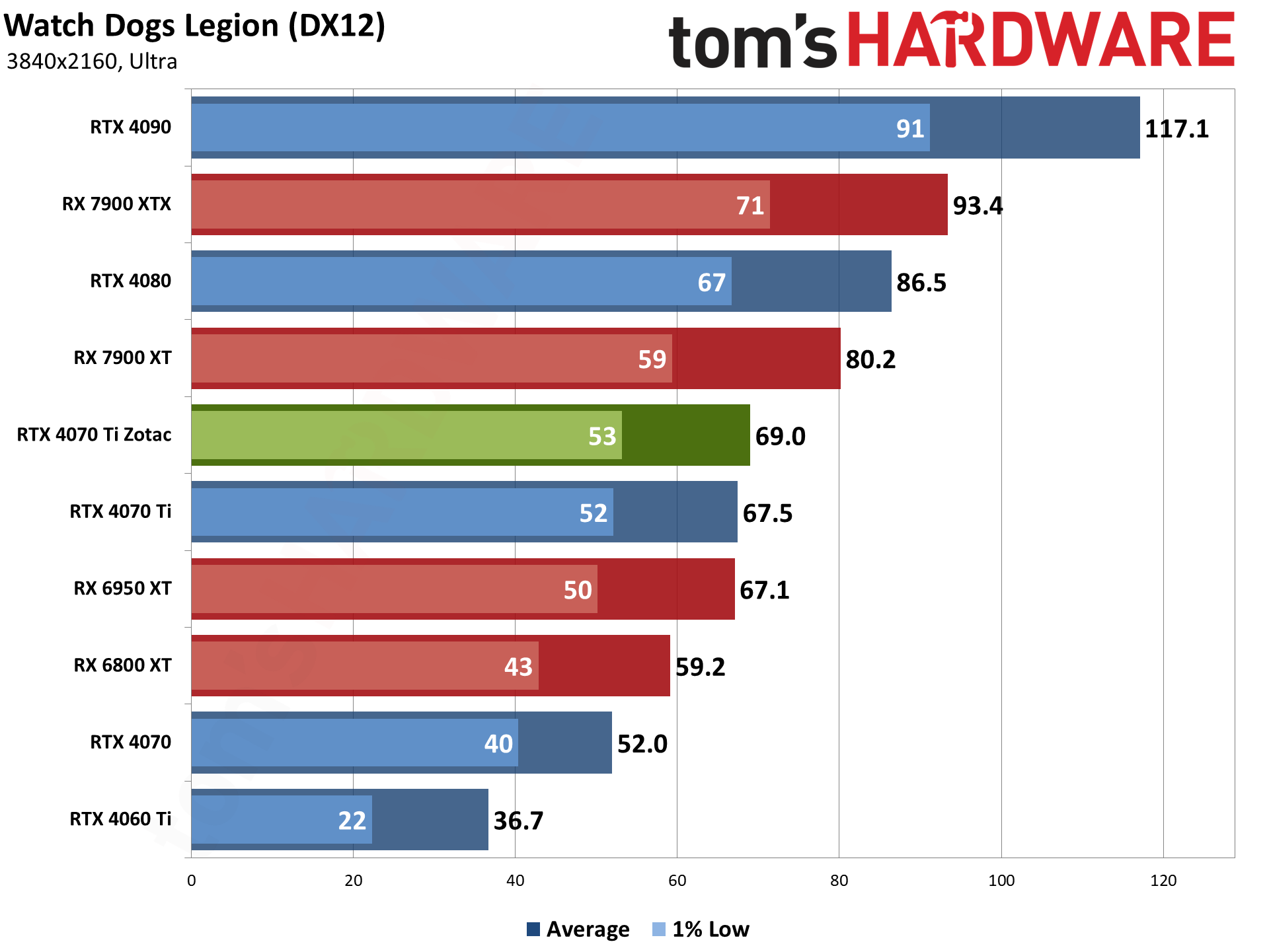
With our current test suite, you can see the overall trends in the games. The Zotac RTX 4070 Ti holds a decent lead of 15–25 percent over the RX 7900 XT in the ray tracing games — with Spider-Man™: Miles Morales being nearly a tie (Nvidia leads by 5%) and Minecraft being a massive 60% lead, thanks to its use of "path tracing."
The rasterization games meanwhile aren't a clean sweep for either GPU, with the Zotac card holding a slim 2–4 percent lead in Forza and Warhammer 3, but then trailing by 2% to as much as 20% (Borderlands) in the other games.
Comparing the Zotac and Asus RTX 4070 Ti cards, at least at 4K nearly everything is within margin of error. Cyberpunk and Minecraft are a bit outside that range with a 6% lead on the Asus card, but every other game is less than a 2% difference.
We're not showing a bunch of other GPUs, since this is primarily a look at the Zotac RTX 4070 Ti, but you can see the overall standings in our GPU benchmarks hierarchy. While it doesn't have as much VRAM or memory bandwidth, the RTX 4070 Ti in general ends up looking a lot like the RTX 3090 across our test suite. That's the benefit of the much larger L2 cache, as otherwise the 3090 has substantially more memory bandwidth.
- MORE: Best Graphics Cards
- MORE: GPU Benchmarks and Hierarchy
- MORE: All Graphics Content
Get Tom's Hardware's best news and in-depth reviews, straight to your inbox.
Current page: Zotac RTX 4070 Ti: 4K Gaming Performance
Prev Page Zotac Gaming RTX 4070 Ti Amp Airo Review Next Page Zotac RTX 4070 Ti: 1440p Gaming Performance
Jarred Walton is a senior editor at Tom's Hardware focusing on everything GPU. He has been working as a tech journalist since 2004, writing for AnandTech, Maximum PC, and PC Gamer. From the first S3 Virge '3D decelerators' to today's GPUs, Jarred keeps up with all the latest graphics trends and is the one to ask about game performance.
-
g-unit1111 The fact it says "exclusively in theaters" below the Across The Spiderverse logo really ruins it, it makes it look like you're paying for a permanent advertisement in your PC.Reply
I bought the Zotac 4070TI for my PC but I wouldn't buy the limited edition version. -
JarredWaltonGPU Reply
It really is quite tacky, isn't it? LOL. I just don't know who actually thinks stuff like this is a good idea. Because guess what? In six months, it's sure not going to still be "Exclusively in Cinemas!"g-unit1111 said:The fact it says "exclusively in theaters" below the Across The Spiderverse logo really ruins it, it makes it look like you're paying for a permanent advertisement in your PC.
I bought the Zotac 4070TI for my PC but I wouldn't buy the limited edition version. -
g-unit1111 ReplyJarredWaltonGPU said:It really is quite tacky, isn't it? LOL. I just don't know who actually thinks stuff like this is a good idea. Because guess what? In six months, it's sure not going to still be "Exclusively in Cinemas!"
Two at this rate, LOL! -
JarredWaltonGPU Reply
Careful, the Justice League™ or Avengers™ might have to track you down!Tom Sunday said:If I would be purchasing an expensive GPU like this…I will not care about Superman, Spiderman or Batman. I want proven and sheer demonstrated quality and performance. What is the matter with ZOTAC trying to enhance the sales of the 4070 Ti with a cartoon character? Today the 4070 Ti AMP Extreme at AMAZON is $900. Most certainly a big $$$ reach for the man on the street. And especially in the midst of a major U.S tech-downturn with sales at their lowest at this point in time! -
cryoburner Reply
Perhaps they thought the text would serve as a distraction from the hideous design. The layout of characters just looks bad, like an image you might expect to appear on a box of cereal or something, and the background color scheme ensures that the card won't look right with practically any PC in existence.JarredWaltonGPU said:It really is quite tacky, isn't it? LOL. I just don't know who actually thinks stuff like this is a good idea. Because guess what? In six months, it's sure not going to still be "Exclusively in Cinemas!"
